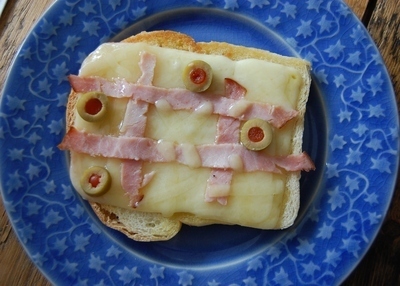Sarah Pinneo's Blog, page 3
May 11, 2012
Update: The Child Who Needed a Pet
Recently I wrote a post about how bad I felt that I could not give my children a dog. Or a cat. Or anything cuddly. We have found a solution! The child that left a note reading: "Dear Santa. Please leave behind a reindeer for me to take good care of" now has two-day-old Buff Orpington chickens. Doesn't he look pleased?
[image error]
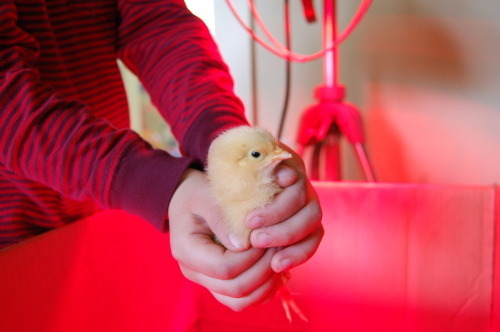
May 2, 2012
Dear Muir Glen, I Need More From This Relationship
 Dear Muir Glen,
Dear Muir Glen,
If you want us to be together, I’m going to need more out of this relationship. Hear me out, would you?
We broke up because you and I had different needs. I needed to be able to make pot after pot of chili without feeling like I was serving up BPA stew all the time. You needed to keep your price point reasonable, given that there weren’t any obvious substitutions you felt you could make to your can liners.
We had, in short, irreconcilable differences.
Then, we had a post break-up chat. I sent you this little breezy message:
11/10/09: I love your products, but I have a question. I see on the label that the can has a "white enamel coating." Have you tested for BPA? Thank you, S.P.
You replied:
Dear Ms. Pinneo:
Thank you for contacting Muir Glen regarding bisphenol-A in food packaging. Bisphenol-A is a critical component of protective coatings used with metal food packaging and provides important quality and safety features to canned foods.
Scientific and government bodies worldwide have examined the scientific evidence and consistently have reached the conclusion that BPA is not a risk to human health. Recent examples include comprehensive risk assessments in Japan and Europe and a review by an independent panel of experts organized by the Harvard Center for Risk Analysis. The can coatings used in Muir Glen packaging comply with the U.S. Food and Drug Administration requirements for use in food contact applications. These coatings have long played an essential part in food preservation, helping to maintain wholesomeness, nutritional value, and product quality.
We work closely with our suppliers to ensure that all of the food ingredients and packaging materials we use are fully in compliance with U.S. Food and Drug Administration requirements and meet our high quality standards.
We will continue to monitor this situation. If you have any further questions, please feel free to contact us. Your questions and comments are always welcome. For more information on the safety of metal food containers, the U.S. Food and Drug Administration press office may be contacted at (301) 436-2335.
Sincerely,
Craig Grey
Consumer Services
To be honest, I didn’t like your reply very much. I felt the need to restate my objections. I wrote:
Dear Mr. Grey,
I have thus far enjoyed Muir Glen products, but I feel your approach is wrong-headed here. It is no coincidence that the email address from which your reply comes is "Corporate.Response@..." Your answer is very much a corporate response. I am quite sure that the Muir Glen line complies with FDA regulations. But the public tide against BPA is turning very much against this product. In fact, it is likely to be outlawed a ways down the road. Why not get ahead of the curve? You make an otherwise wholesome product. People are tired of learning that companies they've trusted use BPA in their packaging. Every mother at our school is horribly annoyed at SIGG for the water bottle revelation.
Get ahead of the game here. Get rid of the BPA.
S.
And you wrote… nothing. And so that was it between us. And even though many of my friends really love you, and it was awkward at parties, we’ve been apart for quite a while now.
And I’ve been coping on my own. There were a few lonely Friday nights, but I pulled through. I flirted with other tomato products, I batted my eyes at tetra-packs and glass bottles. If you must know, I have a big crush on glass bottles these days. In my darker moments I wonder why you can’t just put your tomatoes in glass bottles, so that we could be together again.
Even the FDA has recommended limiting BPA for children, even if they're too wimpy to outlaw it entirely. And then there was that bombshell study published in Pediatrics, which (although it was a small study with a couple of flaws) has implications even more dramatic than I ever would have imagined.
So you were the last one I expected to pop up on twitter a few months ago, with a note just for me:

To which I said:

And then you said… nothing. For months.
Listen, I’m flattered by this semi-recent gesture—really I am. And I do love progress. But I hope you know it’s going to take a little extra love to heal the rift between us. If the problem is on its way to being solved, I’m going to have more than a few questions about how. If your new cans are BPA free, great. But I’m going to need to know what else might be in there. Is it something more stable? Less chemically interesting? Would I be able to spell it on the first try?
Parents’ trust of corporations has changed in the last decade. Remember when fast food restaurants felt free to advertise their “secret sauce?” Those days are over. We can’t take any more secrets, please. We’re more alert now. More knowing. So if you have an improvement to make, let it be good and thorough.
I’ve had my heart broken once already. I’m not going to go through that again.
Tentatively yours,
S.P.
April 22, 2012
Mama, What is a Pedestrian?
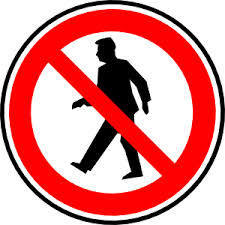 Both of my sons were born in New York City, and my younger child came home from the hospital on the M96 crosstown bus. By the time my kindergartener was 18 months old, he easily did a 1/2 mile to the farmers' market on foot. We gave away our bulky stroller when he was 3.
Both of my sons were born in New York City, and my younger child came home from the hospital on the M96 crosstown bus. By the time my kindergartener was 18 months old, he easily did a 1/2 mile to the farmers' market on foot. We gave away our bulky stroller when he was 3.
In New York, everyone is a pedestrian.
Then, we moved to a rural area. Now we grow our own tomatoes, cucumbers, blackberries and garlic. The peas are climbing up the side of the barn, and my kids have their own tree fort. But we buy milk, and travel to school, in the car.
On today's trip into town, my 8 year-old saw a sign reading Pedestrians 500 Feet. And that's when he asked me: "Mama, what does pedestrian mean?" As I processed the question, it occured to me that the word's very definition was one of those little end-of-civilization moments.
"Pedestrian" is from the Latin "Pedestr-" which literally means to go "on foot." But the other meaning of the word is the equally common, pejorative term meaning "commonplace, ordinary." In classical times, only commoners went on foot. Fancy people went on horseback. And now they have imported cars, with or without leather seats.
When I was growing up in 1970's Michigan, this was the case. We were a struggling one car family, and while my father was at work, my mother and I did the grocery shopping in our little neighborhood store, hauling our goods home in my little red wagon. In high school, it was blaringly obvious that the other riders on my city bus route were either students, like me, or the disadvantaged. In a car culture, only losers walk or take the bus.
In many places, that's still true. But now things are shifting in an uncomfortable way, and in light of the obesity epidemic, walking is now offered as a simple health cure. Magazines like Prevention and Forbes run "Best Cities for Walking!" lists in their glossy pages. And the cities that make those lists, not surprisingly, are expensive ones like Cambridge, Seattle, Ann Arbor, and San Francisco.
My friend Elaine has lately been on a three year quest to move her family out of suburban Pennsylvania, and back into a real city. The moment she decided she needed to get out of there was the moment new "Walking Prohibited" signs were posted alongside the roads in her area.
The CDC studied the question of how many kids walk to school, finding that in 1969 42% of kids walked or biked to school, and by 2001 that number was down to 16%. And distance was usually the problem. In 1969 87% of the kids who lived a mile or less away walked or biked, and in 2001 that had fallen to 63%, meaning that many children who were near enough were still walking or biking.
We took our first family trip to Disney World this year. The first part of the park you see inside the entry gate is "Main Street," where dozens of adorable store fronts await you with their Mickey trinkets. A child walking near me gasped "It's like a little city!"
Oh, the novelty of walking past those tidy doors. And behind us, on the other end of the monorail, our rental cars sat in one of the cheerily named sections of one of the biggest parking lots in central Florida.
April 21, 2012
Julia's Dutch Cover
The Dutch cover of Julia's Child is so cute! Kudos to Unieboek for this catchy picture. My, what green eyes you have!
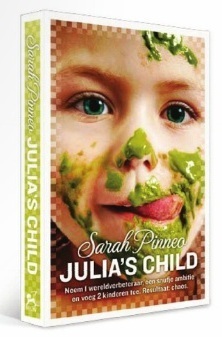
April 1, 2012
A Canadian Mom Changes Baby Food
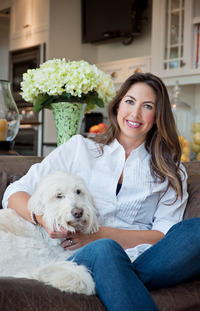 By Sarah Pinneo
By Sarah PinneoOne of the best things about writing Julia's Child was interviewing all of the real life women who have started organic kids' food companies. I learned so much from them, and came to admire their risk taking and fortitude. Jennifer Broe of Baby Gourmet shared a taste of her story with me, and I gobbled up every word.
When her daughter was six months old, Jennifer Broe made all her food at home. She used simple ingredients of very high quality—and the results were heads above anything she could find in the store. “The food in the jars was sub-par. I would never eat it myself. How could I feel good about feeding it to my daughter?”
Broe quickly identified that there was a big hole in the market, but she needed to do her research. Her first step was to put in an application at a thriving Calgary farmers’ market. Even though there were 300 applicants ahead of her, Broe was quickly given a stall. “There wasn’t anyone making fresh baby food in Calgary.”
She spent three weeks putting the recipes together. Her original product was a frozen one. “I used ice cube trays,” she says.
Immediately business was so good that she couldn’t keep up with the demand. She rented space in a commercial kitchen, and put in special freezers. On the weekends, she sold food at the market. At the end of her two year stint, she was selling an eye popping $30,000 CAD in baby food each month. Sometimes, she sold baby food while her second child helped out from his infant carrier on her front.
Then Broe took a big risk. She discontinued her market sales. She did more research, and spent three years reformulating her product into a shelf stable pouch. She raised funding and hired an executive management team.
The risk paid off, and Baby Gourmet re-launched in Wal-Mart in Canada, and in February 2011 Broe’s sister Jill
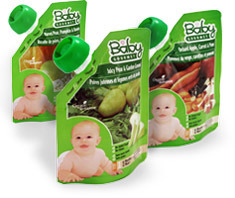 Vos became the VP of Product Development. There are now three different textures of Baby Gourmet for three different stages. For the youngest babies, there are simple purees such as “Juicy Pear and Garden Greens.” The oldest babies get Tasty Textures, including “Vanilla Banana Berry Risotto.”
Vos became the VP of Product Development. There are now three different textures of Baby Gourmet for three different stages. For the youngest babies, there are simple purees such as “Juicy Pear and Garden Greens.” The oldest babies get Tasty Textures, including “Vanilla Banana Berry Risotto.”Now U.S. babies can enjoy the product, too. Last fall, Baby Gourmet launched in Wal-Mart Super Centers on our side of the border.
Ingredients are still of utmost importance to Broe and Vos. While researching the business, they were appalled to find that the fruit that was commonly sold for baby food production was often not first quality. Baby Gourmet is made only from tasty organic produce. They taste every batch to make sure that it’s as good as the last. “Because taste matters,” says Broe. “Better tasting food means easier mealtimes.”
March 19, 2012
A City Girl Gardens Week 1: Anything is Possible
This will be my third season gardening, and this time I intend to do it right. I am starting to suspect that gardening has a lot in common with writing a novel. Lofty intentions meet reality right around mid July. And even while you begin enjoying the fruits of your labors, there are weeds that you never did get around to plucking.
I love the precision with which seed packets are written. The Tyee Spinach I just planted indicates that it should be sewn under 1/4 inch of soil, spaced at 1/2 inch apart. Perhaps one of the seeds I scattered now sits under 1/4" of soil, but only by happenstance. It is possible to buy a plastic device which will help you in this endeavor. It costs $1.97, plus shipping. But I'm not a girl who goes by the book. I wing it. (And it often shows.) I do read the book before I fling it aside. So I happen to know that seeds which are meant to be planted under very little soil need to see a little sunlight to start their germination. So I have not sunk these tender spinach seeds to China.
The peas I started are another story. 1-2" on those. The last two years I have been hoodwinked by pea varieties that swear to not need support. This always proves false, and the peas plants lie snarled on the ground, their little tendrils reaching out, pathetically, for strong arms to hold them.
This year I wised up and planted the peas against the side of the barn. I'm going to trellis them on yarn I'm stringing from nails I pounded in. Yes, that sounds ugly. But the husband has forbidden me to use anymore invisible fishing line in my gardening endeavors. He's tired of detangling it from his mower blades.
Lastly, I've been pruning our copious wild blackberries. Let's say I don't exactly know what I'm doing here, but when the canes stand so tightly together that reaching the ripe fruit is impossible, there is quite a bit of guiltless hacking a girl can stomach. Sweating in my husband's burly man gloves, I snipped and snipped. I now have a giant pile of brambles with an uncertain future, a few scrapes, and a somewhat tidier blackberry patch. As with everything in life, there's surely more to be done.
March 14, 2012
Food Allergies and Mother Fear
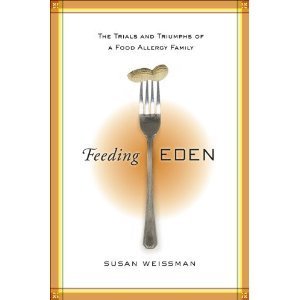
I adore Feeding Eden, the new memoir by Susan Weissman. While I do not have a child with food allergies, I find the topic endlessly fascinating. From the flap copy: "What do you make for dinner when your child has such severe allergies that even one bite of the wrong ingredient could be deadly?"
I have always understood that cheerful mothering is founded upon the ability to banish the suggestion of disaster. Those catalogs stuffed with childproofing gadgets promising: "Finally! A solution to dangerous hard bathtub walls," or touting that mesh thing through which babies are supposed to suck a strawberry without choking. They always made me want to scream. Parenting is tough enough without fate suggesting extra ways to suffer.
Author Susan Weissman was dealt a tricky hand when her infant son Eden became so sick at such a young age. Allergic to a long list of foods, it took years for their family to come to a place where every day didn't seem to promise disaster. In the youngest children, allergies are so very difficult to diagnose. And Eden was born before the latest slew of allergen labeling laws, which made Weissman's road that much tougher.
The allergy details are very interesting, but Weissman really shines when she's describing good old Mother Fear. After a particularly grim (and unexplained) allergic reaction, one emergency room doctor told her not to get crazy:
"How wouldn't I know Crazy? Let me count the ways. Despite the doctor's counsel, Crazy and I became as intimate as lovers. Crazy became my stalker, my unwelcome houseguest, and even my muse. I see Crazy int he shadows of other parents, the parents with children like Eden. When I try to tout my sanity to teachers and friends--'Oh, I try not to get too crazy'--Crazy laughs its ass off in the corner."
As I write this, one of my kids is at hockey practice and the other one is climbing a tree. A hasty trip to the ER is potentially part of any parent's day. Only willful ignorance of that fact (and carefully fitted helmets and mouth guards) allow me to forget to be afraid. Weissman, forced to acknowledge daily risk so much more often than most, exercises for her reader the delicate balance between fearful and smart.
I predict this book will be around for a long time. It will become required reading for the parents of food allergic children. And for the rest of us, it's a thoughtful conversation with our very own brands of Crazy.
March 4, 2012
Is it Lunch, or Is It a Game?
I am made slightly uneasy by the trend toward cute food.
This is difficult to admit, because I don't want to squelch others' fun. But I'm uncomfortable with the message that sandwiches are tastier if they're cut into a heart shape, or that crackers need to be adorable.
Recently, Pepperidge Farm introduced fish-shaped bread, which sells at my local store for $4.65 per pound, as opposed to $2.66/lb for the same brand's sliced bread. The fish bread promises a "deliciously soft texture and fun, crust free shape!" The cynical girl in me hears: the inmates are running the asylum.
But my kids are 6 and 8 already, and they're both tremendously flexible eaters. So when my kindergartener asked if he could make the "tic tac toe" sandwich he found in his "cookbook" I said yes.
A couple of years ago I mentioned to another mother that a certain type of shaped cracker had a nice, clean ingredients list. But she said "I don't buy shaped food." It was the first time I ever heard another mom share my grinchy hesitation. And while I adore food blogs, the proliferation of top shelf food styling and photography can feed our insecurities. A midday gander at Pinterest suggests every cupcake should resemble the face of a perfectly cheerful monkey, and every bowl of oatmeal should sport a raisin and raspberry smile.
If there's a gene which makes people acknowledge the appeal of cute food, I may be missing it. But--hang on--I had it too as a child. I remember begging my mother to let me make "candle salad," wherein half a banana stood on its cut surface, projecting from a canned pineapple ring. There may have been a "flame" made from a maraschino cherry and cool whip. As gross as that sounds, I once felt about it the way I now feel about fresh guacamole. (Come to mama!)
My son enjoyed the work of cutting ham and cheese into thin strips with a real knife, and didn't make a stink when they kept breaking. The cheesy Xs had an advantage on the diagonal of this sandwich, but then they melted under the broiler. Even that didn't ruin his fun.
And then? He ate the whole thing.

